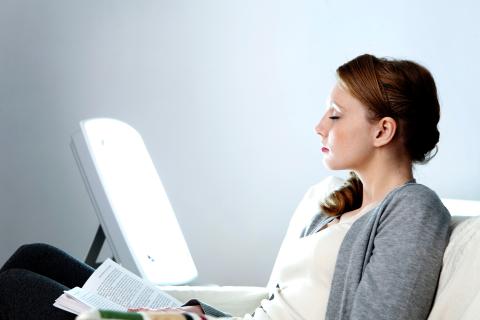
A Simple Way to Help Boost Mood and Combat Winter Blues
As winter continues, many people notice shifts in mood, feeling more sluggish, irritable, or less motivated than usual. For some, these mood changes are mild, but for others, they can develop into Seasonal Affective Disorder (SAD), a form of depression that typically occurs during the Fall and Winter months. SAD is especially prevalent in northern regions, like Canada, where shorter daylight hours and less sunlight make it harder for us to get adequate exposure to natural light.
One effective way to combat the effects of SAD and the general winter blues is Bright Light Therapy (BLT), commonly known as SAD light therapy. A SAD light box, which emits at least 10,000 lux of light, mimics natural sunlight and can significantly improve mood and energy levels. By stimulating certain brain chemicals linked to mood and sleep, this light box helps reset the body’s natural rhythms, which are often disrupted during the darker months.
How Does Bright Light Therapy Work?
Bright Light Therapy can be a simple but helpful method for improving mood and energy. By using a light box that emits at least 10,000 lux of light, we can make up for the lack of sunlight exposure during winter. The bright light stimulates the retina in the eye, which sends signals to the brain’s hypothalamus—an area responsible for regulating sleep, mood, and energy. This process helps balance the body’s circadian rhythms, which are often thrown off in winter due to the lack of morning light.
Using a Light Box for Best Results
For those experiencing SAD or mood changes in the winter, it is recommended to use a SAD light box in the following way:
- Light Intensity: Choose a light box that emits a minimum of 10,000 lux, as this intensity has been shown to be effective in clinical studies.
- Timing: The best time to use your light box is within 30 minutes of waking up in the morning. This timing aligns with the body’s natural rhythm and has been found to be more effective than using it later in the day.
- Distance and Duration: Place the light box 1–2 feet away from your eyes, ensuring it is within your field of vision. You don’t need to stare directly at it, but it should be positioned so that the light reaches your retina. A typical session lasts about 30 minutes daily, and it’s often helpful to integrate this routine into other morning activities—whether you’re reading, eating breakfast, or getting ready for the day.
- Consistency: For optimal results, use the light box consistently each day for around three months. By spring, when sunlight naturally increases, you may no longer need daily sessions, but you can reassess as needed.
Considerations and Safety
While Bright Light Therapy is generally safe, some individuals may experience mild side effects, such as eyestrain or headaches, especially when starting. If discomfort occurs, try moving the light box slightly farther away or reducing session time. Always consult with your Naturopathic Doctor or other healthcare provider before starting any new therapy, particularly if you have pre-existing eye conditions or mood disorders.
With regular use, a SAD light box can be a powerful tool to help manage seasonal mood changes and help you feel more energized and motivated throughout the Winter. This simple, at-home intervention can be life-changing for those who experience the Winter blues or SAD.
Author: Madison Peters, CCNM Integrative Cancer Clinic Intern
Please note that the information provided in this blog post is for informational purposes only and should not be considered as medical advice. It is essential to consult with your healthcare provider or a qualified professional before making any healthcare decisions or taking any actions based on the information presented here.